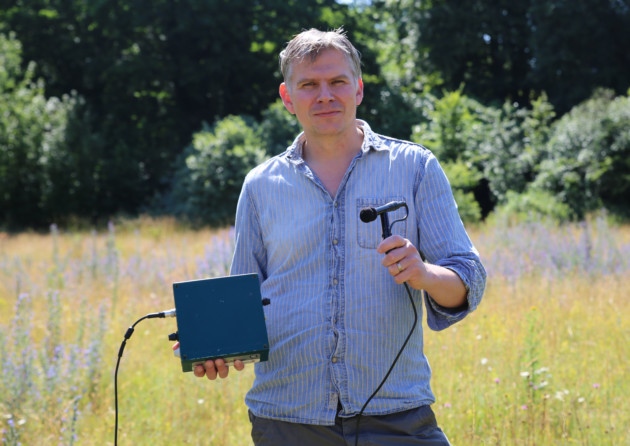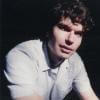Acoustic sensors enable efficient and non-invasive monitoring of a wide range of species, including many that are difficult to monitor in other ways. Although they were initially limited in application scope largely due to cost and hardware constraints, the development of low-cost, open-source models like the Audiomoth in recent years has increased access immensely and opened up new avenues of research. For example, some teams are using them to identify illicit human activities through the detection of associated sounds, like gunshots, vehicles, or chainsaws (e.g. OpenEars).
With this relatively novel dimension of wildlife monitoring rapidly advancing in both marine and terrestrial systems, it is crucial that we identify and share information about the utility and constraints of these sensors to inform efforts. A recent study identified advancements in hardware and machine learning applications, as well as early development of acoustic biodiversity indicators, as factors facilitating progress in the field. In terms of limitations, the authors highlight insufficient reference sound libraries, a lack of open-source audio processing tools, and a need for standardization of survey and analysis protocols. They also stress the importance of collaboration in moving forward, which is precisely what this group will aim to facilitate.
If you're new to acoustic monitoring and want to get up to speed on the basics, check out these beginner's resources and conversations from across the WILDLABS platform:
Three Resources for Beginners:
- Listening to Nature: The Emerging Field of Bioacoustics, Adam Welz
- Ecoacoustics and Biodiversity Monitoring, RSEC Journal
- Monitoring Ecosystems through Sound: The Present and Future of Passive Acoustics, Ella Browning and Rory Gibb
Three Forum Threads for Beginners:
- AudioMoth user guide | Tessa Rhinehart
- Audiomoth and Natterjack Monitoring (UK) | Stuart Newson
- Help with analysing bat recordings from Audiomoth | Carlos Abrahams
Three Tutorials for Beginners:
- "How do I perform automated recordings of bird assemblages?" | Carlos Abrahams, Tech Tutors
- "How do I scale up acoustic surveys with Audiomoths and automated processing?" | Tessa Rhinehart, Tech Tutors
- Acoustic Monitoring | David Watson, Ruby Lee, Andy Hill, and Dimitri Ponirakis, Virtual Meetups
Want to know more about acoustic monitoring and learn from experts in the WILDLABS community? Jump into the discussion in our Acoustic Monitoring group!
Header image: Carly Batist
Do you have photos and videos of your conservation tech work? We want to include them in a conservation technology showcase video
17 May 2024
Article
Read in detail about how to use The Inventory, our new living directory of conservation technology tools, organisations, and R&D projects.
1 May 2024
Article
The Inventory is your one-stop shop for conservation technology tools, organisations, and R&D projects. Start contributing to it now!
1 May 2024
Technology to End the Sixth Mass Extinction. Salary: $132 - $160k; Location: Seattle WA; 7+ years of experience in hardware product development and manufacturing; View post for full job description
1 May 2024
TBC is looking for an applicant to lead on the design, analysis and reporting of data from a wide range of innovative bat population monitoring surveys with a particular focus on passive acoustic monitoring, undertake...
24 April 2024
Full-time 3 year postdoctoral fellowship in Escondido, CA
22 April 2024
In a recent publication we tested Underwater Passive Acoustic Monitoring (UPAM) as a feasible non-invasive technique to study the calling behavior of therathened aquatic Andean frogs under natural conditions in the...
6 April 2024
What can soundscapes tell us about ecosystem functioning and health? We are looking to hire a postdoctoral researcher in ecoacoustics for Nature Recovery at Oxford
2 April 2024
Hussey Labs seeks a senior post-doctoral researcher/senior research associate for movement ecology of Greenland halibut in the context of fisheries management across Baffin Bay-Davis Strait, Eastern Canadian Arctic.
13 March 2024
Catch up on the conservation tech discussions and events that happened during World Wildlife Day 2024!
7 March 2024
Do you know anyone interested in this position? Let them know by sharing widely.
27 February 2024
The Ecological Acoustics and Behavior Lab at the University of New Hampshire seeks a PhD student to join our lab to investigate how forest habitat affects moose occupancy and soundscape in northern New Hampshire
13 February 2024
June 2024
July 2024
event
September 2024
event
December 2020
June 2020
43 Products
Recently updated products
Calculating species abundance from Acoustic Data
26 January 2016 1:22pm
26 April 2016 11:59am
Hi Stephanie,
This is an interesting thread. For those interested in the topic, and forgive me for the blatant self-promotion of work, a Biological Reviews 2013 paper on the topic can be downloaded here http://www.creem.st-and.ac.uk/decaf/outputs. Additional case studies papers as well as a more general public paper in Acoustics Today are also available for download from the link. This link is the outputs page from project DECAF, dedicated to estimating animal density from passive acoustic fixed sensors, using cetaceans as case studies. The methods have been far more developed and used in the cetacean community, but I suspect a wider use in terrestrial environments will occur in the coming years. A key hurdle is perhaps the dynamics involved in acoustic cue rate production, but the issues will be much easier to tackle in terrestrial environments than in the marine environments we have been working on.
Hope this is helpful,
Tiago
26 April 2016 12:13pm
Hi Tiago,
Thank you for sharing this paper and contributing your experience to the thread. Blantant self promotion, as you put it, is more than welcome when the work you're pointing to is such a helpful resource!
Cheers,
Stephanie
Funding and Job Opportunities
26 November 2015 2:21pm
26 February 2016 3:26pm
The Elephant Listening Project at the University of Cornell is looking a Postdoctoral research to study forest elephants in central Africa using a combination of field observations and acoustic recordings. More info.
A novel citizen science approach for large-scale monitoring of bats
 Stuart Newson
Stuart Newson
5 February 2016 12:00am
Report outlines 2016's most pressing conservation issues
 Olivia Bailey
Olivia Bailey
3 February 2016 12:00am
Must-Have Books on Bioacoustics
31 January 2016 4:26pm
(News Article) Listening to the sounds of nature 24-7 in Alberta
31 January 2016 4:16pm
Ecological Acoustics (Ecological Informatics special issue)
29 December 2015 9:56pm














26 April 2016 10:45am
Hi,
I think Steffen provided a good summary of the challenges.
IMO, the two most promising methods of estimating animal density from acoustic monitoring are the "generalised random encounter model" (gREM) and an extension of spatially-explicit capture-recapture (SECR). These potentially solve Steffen's problems 2 and 3, i.e. linking acoustic counts to abundance (2), and converting abundance to density (3).
gREM, although theoretically possible, may be tricky in practice (especially obtaining an estimate of how wide an animal's acoustic signal is). See here:
http://onlinelibrary.wiley.com/doi/10.1111/2041-210X.12346/abstract
SECR is potentially very powerful, but depends on an independent estimate of calling rate (a problem Yu Shiu rightly picked up on). I think this would be entirely possible for a species you can find and observe (e.g. a frog or common bird species), but difficult for lots of cryptic, low density species (e.g. tigers!, as Courtney mentioned). See here:
https://www.researchgate.net/publication/272371302_A_general_framework_for_animal_density_estimation_from_acoustic_detections_across_a_fixed_microphone_array
However, gREM and SECR do not help with Steffen's first point (1) "quantifying the number of vocalisations from a stream of acoustic recordings". Others might be able to advise on the best approaches there. Perhaps this is primarily a software / data processing problem...?
In terms of sampling design (as Mariane and Courtney were interested in), it depends what your aims are. For occupancy (which is not equal to abundance/density), similar design principles to camera-trapping are fair (but taking into consideration Yu Shiu's point that the effective sampling area might be MUCH larger for an acoustic sensor than a camera trap, so camera spacing will have to be larger too). For gREM, you can fairly flexible about sampling design (repeated detections of the same individual are not a problem), but your sensors should be set randomly in space (with respect to animal movement), not along trails etc. For SECR, you don't have to set your sensors randomly, but sensors must be close enough together for repeated detections of the same call in multiple sensors simultaneously (this design constrasts, therefore, with an occupancy design).
Hth,
Ollie